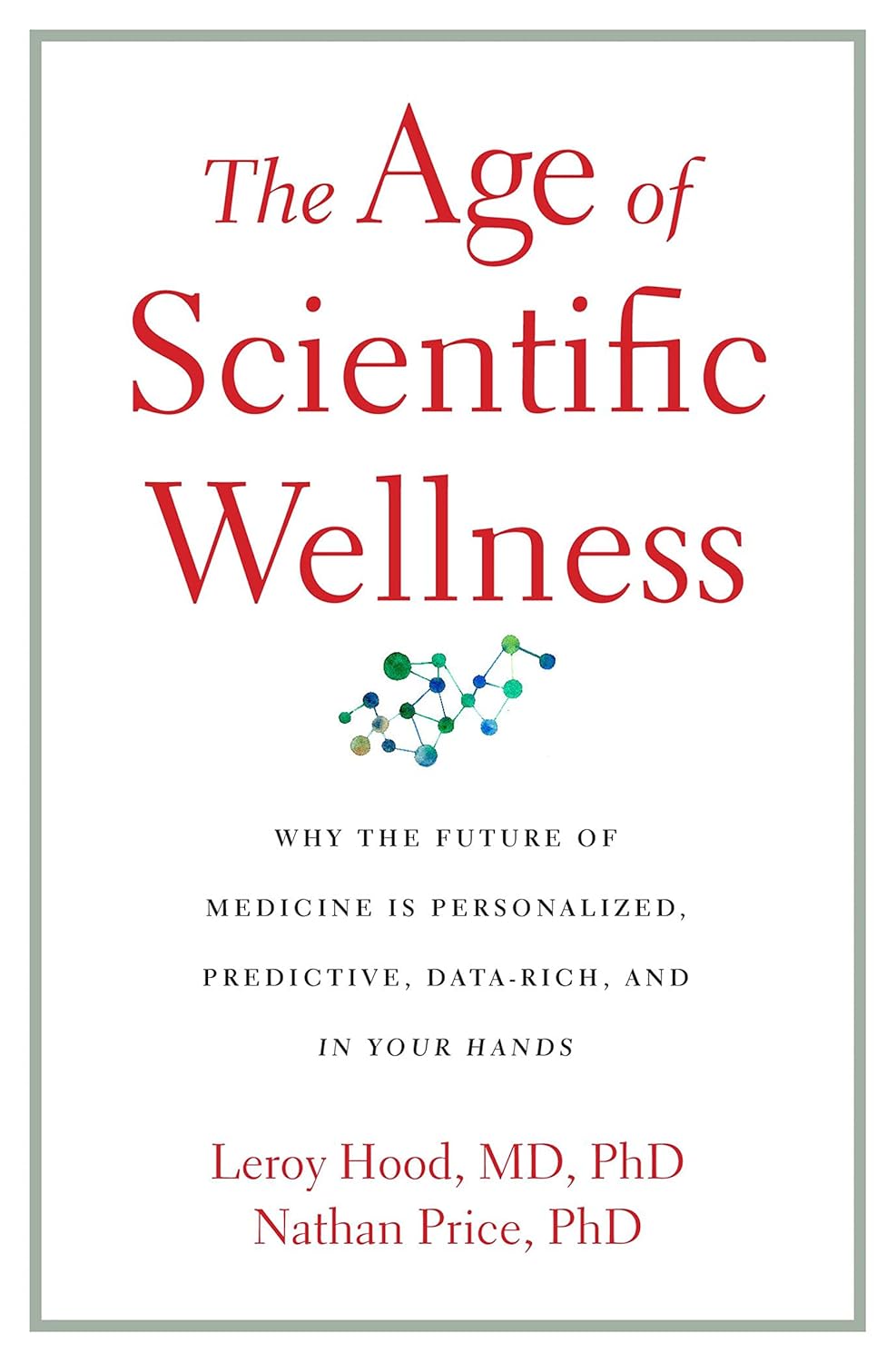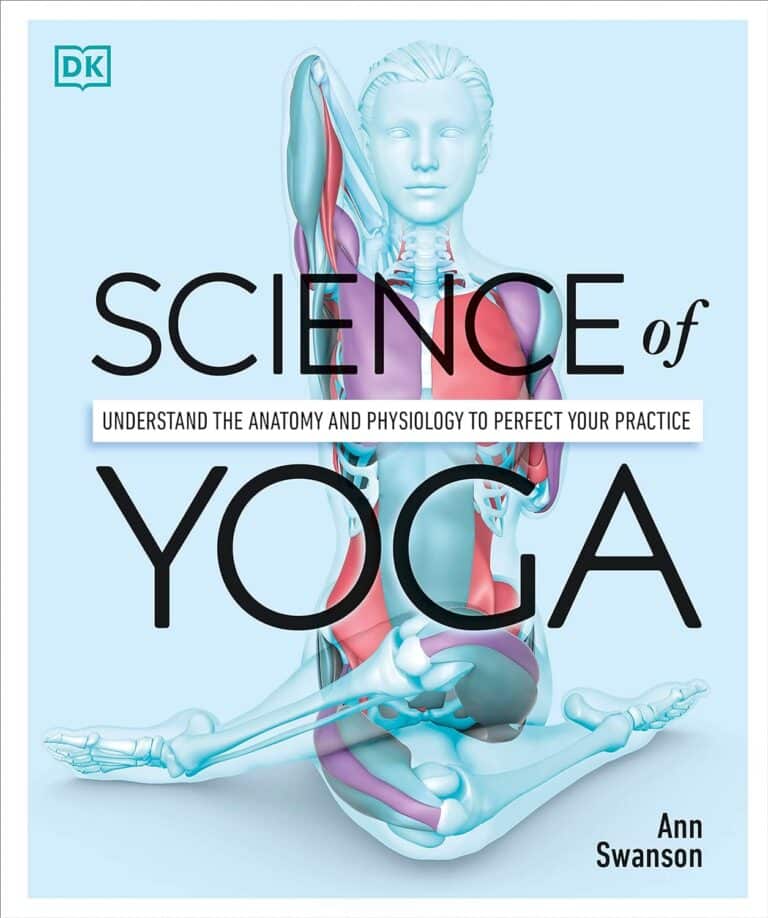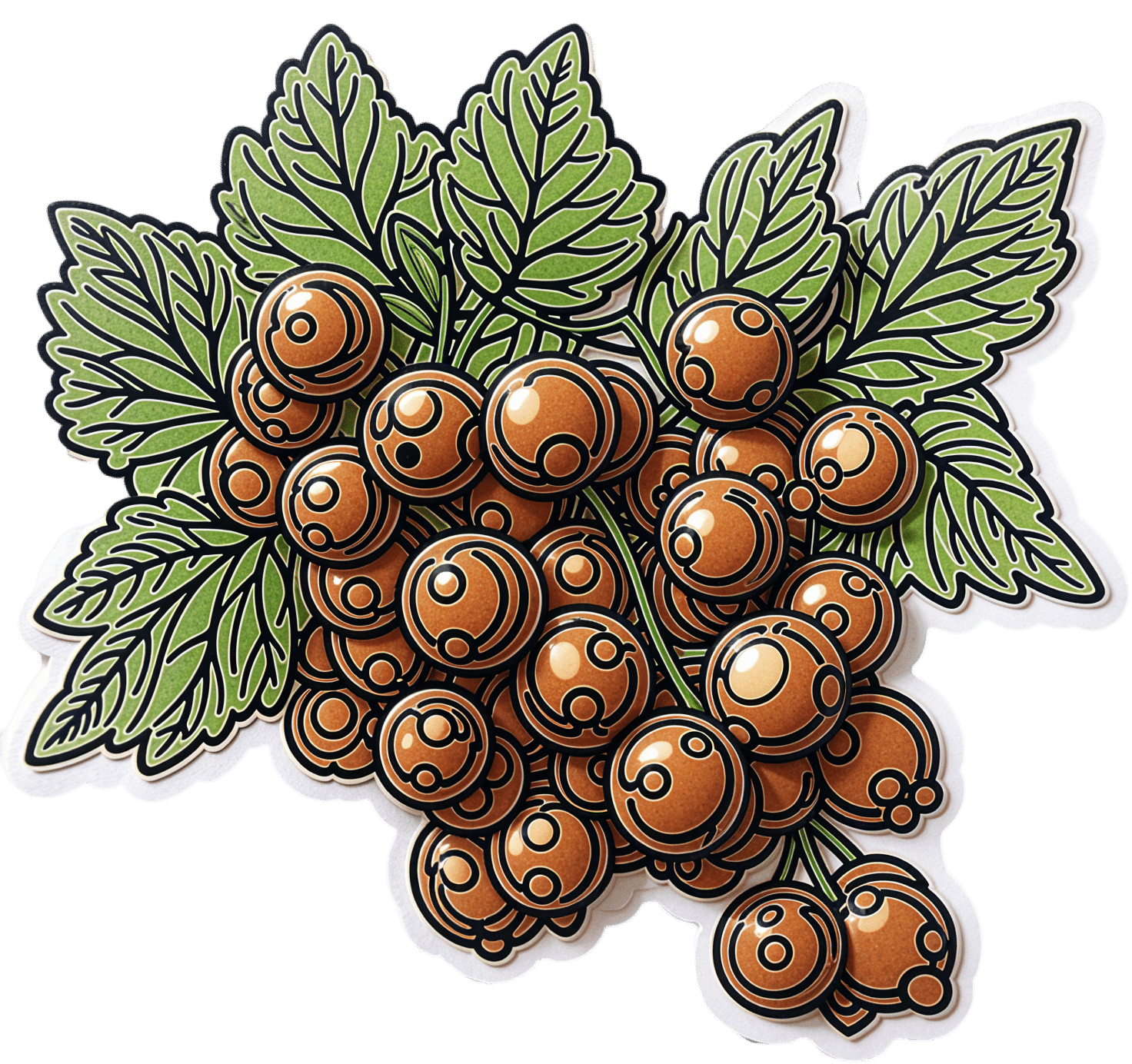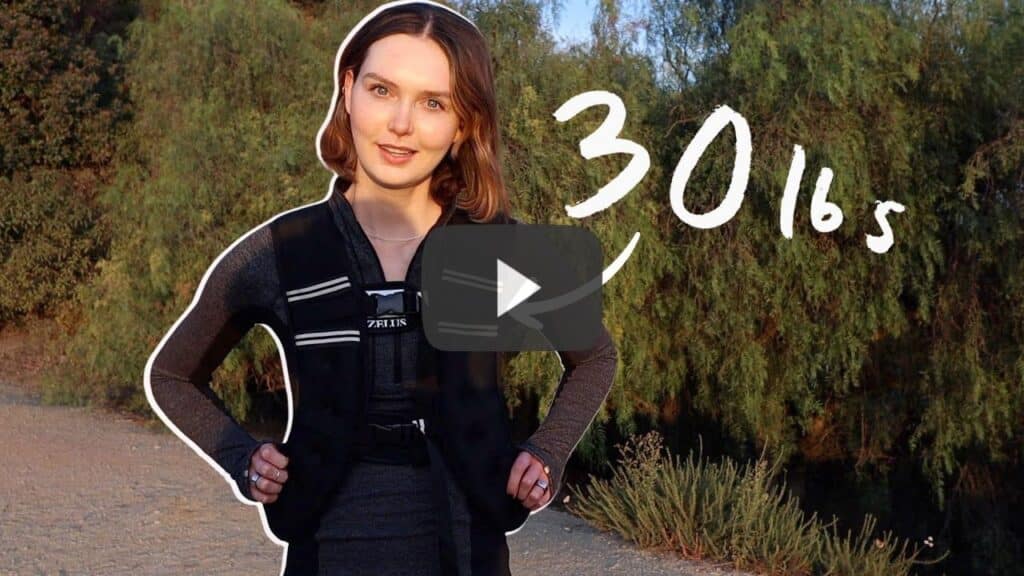
The Age of Scientific Wellness – by Dr. Leroy Hood & Dr. Nathan Price
10almonds is reader-supported. We may, at no cost to you, receive a portion of sales if you purchase a product through a link in this article.
We don’t usually do an author bio beyond mentioning their professional background, but in this case it’s worth mentioning that the first-listed author, Dr. Leroy Hood, is the one who invented the automated gene sequencing technology that made the Human Genome Project possible. In terms of awards, he’s won everything short of a Nobel Prize, and that’s probably less a snub and more a matter of how there isn’t a Nobel Prize for Engineering—his field is molecular biotechnology, but what he solved was an engineering problem.
In this book, the authors set out to make the case that “find it and fix it” medicine has done a respectable job of getting us where we are, but what we need now is P4 medicine:
- Predict
- Prevent
- Personalize
- Participate
The idea is that with adequate data (genomic, phenomic, and digital), we can predict the course of health sufficiently well to interrupt the process of disease at its actual (previously unseen) starting point, instead of waiting for symptoms to show up, thus preventing it proactively. The personalization is because this will not be a “one size fits all” approach, since our physiologies are different, our markers of health and disease will be somewhat too. And the participatory aspect? That’s because the only way to get enough data to do this for an entire population is with—more or less—an entire population’s involvement.
This is what happens when, for example, your fitness tracker asks if it can share anonymized health metrics for research purposes and you allow it—you are becoming part of the science (a noble and worthy act!).
You may be wondering whether this book has health advice, or is more about the big picture. And, the answer is both. It’s mostly about the big picture but it does have a lot of (data-driven!) health advice too, especially towards the end.
The style is largely narrative, talking the reader through the progresses (and setbacks) that have marked the path so far, and projecting the next part of the journey, in the hope that we can avoid being part of a generation born just too late to take advantage of this revolutionary approach to health.
Bottom line: this isn’t a very light read, but it is a worthwhile one, and it’ll surely inspire you to increase the extent to which you are proactive about your health!
Click here to check out The Age Of Scientific Wellness, and be part of it!
Don’t Forget…
Did you arrive here from our newsletter? Don’t forget to return to the email to continue learning!
Recommended
Learn to Age Gracefully
Join the 98k+ American women taking control of their health & aging with our 100% free (and fun!) daily emails:
-
Artichoke vs Cabbage – Which is Healthier?
10almonds is reader-supported. We may, at no cost to you, receive a portion of sales if you purchase a product through a link in this article.
Our Verdict
When comparing artichoke to cabbage, we picked the artichoke.
Why?
Looking at the macros first of all, artichoke has more than 2x the protein; it also has nearly 2x the carbs, but to more than counterbalance that, it has more than 2x the fiber. An easy win for artichoke in the macros category.
In the category of vitamins, both are very respectable; artichoke has more of vitamins B1, B2, B3, B5, B9, E, and choline, while cabbage has more of vitamins A, C, and K. Superficially, that’s a 7:3 win for artichoke, but the margins of difference for artichoke’s vitamins are very small (meaning cabbage is hot on its heels for those vitamins), whereas cabbage’s A, C, and K are with big margins of difference (3–7x more), and arguably those vitamins are higher priority in the sense that B-vitamins of various kinds are found in most foods, whereas A, C, and K aren’t, and while E isn’t either, artichoke had a tiny margin of difference for that. All in all, we’re calling this category a tie, as an equally fair argument could be made for either vegetable here.
When it comes to minerals, there’s a much clearer winner: artichoke has a lot more copper, iron, magnesium, manganese, phosphorus, potassium, and zinc, while cabbage has a tiny bit more selenium. The two vegetables are equal on calcium.
Adding up two clear artichoke wins and a tie, makes for an overall clear win for artichoke. Of course, enjoy both though; diversity is almost always best of all!
Want to learn more?
You might like to read:
What’s Your Plant Diversity Score?
Take care!
Share This Post
-
Five Flavors & Five Benefits
10almonds is reader-supported. We may, at no cost to you, receive a portion of sales if you purchase a product through a link in this article.
Five Flavors Of Good Health
Schisandra chinensis, henceforth Schisandra, is also called the “five flavor fruit”, for covering the culinary bases of sweet, salt, bitter, sour, and pungent.
It can be eaten as a fruit (small red berries), juiced from the fruit, or otherwise extracted into supplements (dried powder of the fruit being a common one).
It has long enjoyed usage in various traditional medicines, especially in China and Siberia.
So, what are its health claims, and how does the science stack up?
Menopause
Most of the studies are mouse studies, and we prefer studies on humans, so here’s a small (n=36) randomized clinical trial that concluded…
❝Schisandra chinensis can be a safe and effective complementary medicine for menopausal symptoms, especially for hot flushes, sweating, and heart palpitations❞
~ Dr. Joon Young Park & Dr. Kye Hyun Kim
Read more: A randomized, double-blind, placebo-controlled trial of Schisandra chinensis for menopausal symptoms
Antioxidant (and perhaps more)
Like many berries, it’s a good source of lignans offering antioxidant effects:
Antioxidant Effects of Schisandra chinensis Fruits and Their Active Constituents
Lignans usually have anticancer effects too (which is reasonably, given what is antioxidant is usually anticancer and anti-inflammatory as well, by the same mechanism) but those have not yet been studied in schisandra specifically.
Antihepatotoxicity
In other words, it’s good for your liver. At least, so animal studies tell us, because human studies haven’t been done yet for this one. The effect is largely due to its antioxidant properties, but it seems especially effective for the liver—which is not surprising, giving the liver’s regeneration mechanism.
Anyway, here’s a fascinating study that didn’t even need to use the fruit itself, just the pollen from the plant, it was that potent:
Athletics enhancer
While it’s not yet filling the shelves of sports nutrition stores, we found a small (n=45) study with healthy post-menopausal women who took either 1g of schisandra (experimental group) or 1g of starch (placebo group), measured quadriceps muscle strength and resting lactate levels over the course of a 12 week intervention period, and found:
❝Supplementation of Schisandra chinensis extract can help to improve quadriceps muscle strength as well as decrease lactate level at rest in adult women ❞
Anti-Alzheimers & Anti-Parkinsons
The studies for this are all in vitro, but that’s because it’s hard to find volunteers willing to have their brains sliced and looked at under a microscope while they’re still alive.
Nevertheless, the results are compelling, and it seems uncontroversial to say that schisandra, or specifically Schisandrin B, a compound it contains, has not only anti-inflammatory properties, but also neuroprotective properties, and specifically blocks the formation of excess amyloid-β peptides in the brain (which are critical for the formation of amyloid plaque, as found in the brains of Alzheimer’s patients):
Is it safe?
For most people, yes! Some caveats:
- As it can stimulate the uterus, it’s not recommended if you’re pregant.
- Taking more than the recommended amount can worsen symptoms of heartburn, GERD, ulcers, or other illnesses like that.
And as ever, do speak with our own doctor/pharmacist if unsure, as your circumstances may vary and we cannot cover all possibilities here.
Where can I get some?
We don’t sell it, but here for your convenience is an example product on Amazon
Enjoy!
Share This Post
-
How do science journalists decide whether a psychology study is worth covering?
10almonds is reader-supported. We may, at no cost to you, receive a portion of sales if you purchase a product through a link in this article.
Complex research papers and data flood academic journals daily, and science journalists play a pivotal role in disseminating that information to the public. This can be a daunting task, requiring a keen understanding of the subject matter and the ability to translate dense academic language into narratives that resonate with the general public.
Several resources and tip sheets, including the Know Your Research section here at The Journalist’s Resource, aim to help journalists hone their skills in reporting on academic research.
But what factors do science journalists look for to decide whether a social science research study is trustworthy and newsworthy? That’s the question researchers at the University of California, Davis, and the University of Melbourne in Australia examine in a recent study, “How Do Science Journalists Evaluate Psychology Research?” published in September in Advances in Methods and Practices in Psychological Science.
Their online survey of 181 mostly U.S.-based science journalists looked at how and whether they were influenced by four factors in fictitious research summaries: the sample size (number of participants in the study), sample representativeness (whether the participants in the study were from a convenience sample or a more representative sample), the statistical significance level of the result (just barely statistically significant or well below the significance threshold), and the prestige of a researcher’s university.
The researchers found that sample size was the only factor that had a robust influence on journalists’ ratings of how trustworthy and newsworthy a study finding was.
University prestige had no effect, while the effects of sample representativeness and statistical significance were inconclusive.
But there’s nuance to the findings, the authors note.
“I don’t want people to think that science journalists aren’t paying attention to other things, and are only paying attention to sample size,” says Julia Bottesini, an independent researcher, a recent Ph.D. graduate from the Psychology Department at UC Davis, and the first author of the study.
Overall, the results show that “these journalists are doing a very decent job” vetting research findings, Bottesini says.
Also, the findings from the study are not generalizable to all science journalists or other fields of research, the authors note.
“Instead, our conclusions should be circumscribed to U.S.-based science journalists who are at least somewhat familiar with the statistical and replication challenges facing science,” they write. (Over the past decade a series of projects have found that the results of many studies in psychology and other fields can’t be reproduced, leading to what has been called a ‘replication crisis.’)
“This [study] is just one tiny brick in the wall and I hope other people get excited about this topic and do more research on it,” Bottesini says.
More on the study’s findings
The study’s findings can be useful for researchers who want to better understand how science journalists read their research and what kind of intervention — such as teaching journalists about statistics — can help journalists better understand research papers.
“As an academic, I take away the idea that journalists are a great population to try to study because they’re doing something really important and it’s important to know more about what they’re doing,” says Ellen Peters, director of Center for Science Communication Research at the School of Journalism and Communication at the University of Oregon. Peters, who was not involved in the study, is also a psychologist who studies human judgment and decision-making.
Peters says the study was “overall terrific.” She adds that understanding how journalists do their work “is an incredibly important thing to do because journalists are who reach the majority of the U.S. with science news, so understanding how they’re reading some of our scientific studies and then choosing whether to write about them or not is important.”
The study, conducted between December 2020 and March 2021, is based on an online survey of journalists who said they at least sometimes covered science or other topics related to health, medicine, psychology, social sciences, or well-being. They were offered a $25 Amazon gift card as compensation.
Among the participants, 77% were women, 19% were men, 3% were nonbinary and 1% preferred not to say. About 62% said they had studied physical or natural sciences at the undergraduate level, and 24% at the graduate level. Also, 48% reported having a journalism degree. The study did not include the journalists’ news reporting experience level.
Participants were recruited through the professional network of Christie Aschwanden, an independent journalist and consultant on the study, which could be a source of bias, the authors note.
“Although the size of the sample we obtained (N = 181) suggests we were able to collect a range of perspectives, we suspect this sample is biased by an ‘Aschwanden effect’: that science journalists in the same professional network as C. Aschwanden will be more familiar with issues related to the replication crisis in psychology and subsequent methodological reform, a topic C. Aschwanden has covered extensively in her work,” they write.
Participants were randomly presented with eight of 22 one-paragraph fictitious social and personality psychology research summaries with fictitious authors. The summaries are posted on Open Science Framework, a free and open-source project management tool for researchers by the Center for Open Science, with a mission to increase openness, integrity and reproducibility of research.
For instance, one of the vignettes reads:
“Scientists at Harvard University announced today the results of a study exploring whether introspection can improve cooperation. 550 undergraduates at the university were randomly assigned to either do a breathing exercise or reflect on a series of questions designed to promote introspective thoughts for 5 minutes. Participants then engaged in a cooperative decision-making game, where cooperation resulted in better outcomes. People who spent time on introspection performed significantly better at these cooperative games (t (548) = 3.21, p = 0.001). ‘Introspection seems to promote better cooperation between people,’ says Dr. Quinn, the lead author on the paper.”
In addition to answering multiple-choice survey questions, participants were given the opportunity to answer open-ended questions, such as “What characteristics do you [typically] consider when evaluating the trustworthiness of a scientific finding?”
Bottesini says those responses illuminated how science journalists analyze a research study. Participants often mentioned the prestige of the journal in which it was published or whether the study had been peer-reviewed. Many also seemed to value experimental research designs over observational studies.
Considering statistical significance
When it came to considering p-values, “some answers suggested that journalists do take statistical significance into account, but only very few included explanations that suggested they made any distinction between higher or lower p values; instead, most mentions of p values suggest journalists focused on whether the key result was statistically significant,” the authors write.
Also, many participants mentioned that it was very important to talk to outside experts or researchers in the same field to get a better understanding of the finding and whether it could be trusted, the authors write.
“Journalists also expressed that it was important to understand who funded the study and whether the researchers or funders had any conflicts of interest,” they write.
Participants also “indicated that making claims that were calibrated to the evidence was also important and expressed misgivings about studies for which the conclusions do not follow from the evidence,” the authors write.
In response to the open-ended question, “What characteristics do you [typically] consider when evaluating the trustworthiness of a scientific finding?” some journalists wrote they checked whether the study was overstating conclusions or claims. Below are some of their written responses:
- “Is the researcher adamant that this study of 40 college kids is representative? If so, that’s a red flag.”
- “Whether authors make sweeping generalizations based on the study or take a more measured approach to sharing and promoting it.”
- “Another major point for me is how ‘certain’ the scientists appear to be when commenting on their findings. If a researcher makes claims which I consider to be over-the-top about the validity or impact of their findings, I often won’t cover.”
- “I also look at the difference between what an experiment actually shows versus the conclusion researchers draw from it — if there’s a big gap, that’s a huge red flag.”
Peters says the study’s findings show that “not only are journalists smart, but they have also gone out of their way to get educated about things that should matter.”
What other research shows about science journalists
A 2023 study, published in the International Journal of Communication, based on an online survey of 82 U.S. science journalists, aims to understand what they know and think about open-access research, including peer-reviewed journals and articles that don’t have a paywall, and preprints. Data was collected between October 2021 and February 2022. Preprints are scientific studies that have yet to be peer-reviewed and are shared on open repositories such as medRxiv and bioRxiv. The study finds that its respondents “are aware of OA and related issues and make conscious decisions around which OA scholarly articles they use as sources.”
A 2021 study, published in the Journal of Science Communication, looks at the impact of the COVID-19 pandemic on the work of science journalists. Based on an online survey of 633 science journalists from 77 countries, it finds that the pandemic somewhat brought scientists and science journalists closer together. “For most respondents, scientists were more available and more talkative,” the authors write. The pandemic has also provided an opportunity to explain the scientific process to the public, and remind them that “science is not a finished enterprise,” the authors write.
More than a decade ago, a 2008 study, published in PLOS Medicine, and based on an analysis of 500 health news stories, found that “journalists usually fail to discuss costs, the quality of the evidence, the existence of alternative options, and the absolute magnitude of potential benefits and harms,” when reporting on research studies. Giving time to journalists to research and understand the studies, giving them space for publication and broadcasting of the stories, and training them in understanding academic research are some of the solutions to fill the gaps, writes Gary Schwitzer, the study author.
Advice for journalists
We asked Bottesini, Peters, Aschwanden and Tamar Wilner, a postdoctoral fellow at the University of Texas, who was not involved in the study, to share advice for journalists who cover research studies. Wilner is conducting a study on how journalism research informs the practice of journalism. Here are their tips:
1. Examine the study before reporting it.
Does the study claim match the evidence? “One thing that makes me trust the paper more is if their interpretation of the findings is very calibrated to the kind of evidence that they have,” says Bottesini. In other words, if the study makes a claim in its results that’s far-fetched, the authors should present a lot of evidence to back that claim.
Not all surprising results are newsworthy. If you come across a surprising finding from a single study, Peters advises you to step back and remember Carl Sagan’s quote: “Extraordinary claims require extraordinary evidence.”
How transparent are the authors about their data? For instance, are the authors posting information such as their data and the computer codes they use to analyze the data on platforms such as Open Science Framework, AsPredicted, or The Dataverse Project? Some researchers ‘preregister’ their studies, which means they share how they’re planning to analyze the data before they see them. “Transparency doesn’t automatically mean that a study is trustworthy,” but it gives others the chance to double-check the findings, Bottesini says.
Look at the study design. Is it an experimental study or an observational study? Observational studies can show correlations but not causation.
“Observational studies can be very important for suggesting hypotheses and pointing us towards relationships and associations,” Aschwanden says.
Experimental studies can provide stronger evidence toward a cause, but journalists must still be cautious when reporting the results, she advises. “If we end up implying causality, then once it’s published and people see it, it can really take hold,” she says.
Know the difference between preprints and peer-reviewed, published studies. Peer-reviewed papers tend to be of higher quality than those that are not peer-reviewed. Read our tip sheet on the difference between preprints and journal articles.
Beware of predatory journals. Predatory journals are journals that “claim to be legitimate scholarly journals, but misrepresent their publishing practices,” according to a 2020 journal article, published in the journal Toxicologic Pathology, “Predatory Journals: What They Are and How to Avoid Them.”
2. Zoom in on data.
Read the methods section of the study. The methods section of the study usually appears after the introduction and background section. “To me, the methods section is almost the most important part of any scientific paper,” says Aschwanden. “It’s amazing to me how often you read the design and the methods section, and anyone can see that it’s a flawed design. So just giving things a gut-level check can be really important.”
What’s the sample size? Not all good studies have large numbers of participants but pay attention to the claims a study makes with a small sample size. “If you have a small sample, you calibrate your claims to the things you can tell about those people and don’t make big claims based on a little bit of evidence,” says Bottesini.
But also remember that factors such as sample size and p-value are not “as clear cut as some journalists might assume,” says Wilner.
How representative of a population is the study sample? “If the study has a non-representative sample of, say, undergraduate students, and they’re making claims about the general population, that’s kind of a red flag,” says Bottesini. Aschwanden points to the acronym WEIRD, which stands for “Western, Educated, Industrialized, Rich, and Democratic,” and is used to highlight a lack of diversity in a sample. Studies based on such samples may not be generalizable to the entire population, she says.
Look at the p-value. Statistical significance is both confusing and controversial, but it’s important to consider. Read our tip sheet, “5 Things Journalists Need to Know About Statistical Significance,” to better understand it.
3. Talk to scientists not involved in the study.
If you’re not sure about the quality of a study, ask for help. “Talk to someone who is an expert in study design or statistics to make sure that [the study authors] use the appropriate statistics and that methods they use are appropriate because it’s amazing to me how often they’re not,” says Aschwanden.
Get an opinion from an outside expert. It’s always a good idea to present the study to other researchers in the field, who have no conflicts of interest and are not involved in the research you’re covering and get their opinion. “Don’t take scientists at their word. Look into it. Ask other scientists, preferably the ones who don’t have a conflict of interest with the research,” says Bottesini.
4. Remember that a single study is simply one piece of a growing body of evidence.
“I have a general rule that a single study doesn’t tell us very much; it just gives us proof of concept,” says Peters. “It gives us interesting ideas. It should be retested. We need an accumulation of evidence.”
Aschwanden says as a practice, she tries to avoid reporting stories about individual studies, with some exceptions such as very large, randomized controlled studies that have been underway for a long time and have a large number of participants. “I don’t want to say you never want to write a single-study story, but it always needs to be placed in the context of the rest of the evidence that we have available,” she says.
Wilner advises journalists to spend some time looking at the scope of research on the study’s specific topic and learn how it has been written about and studied up to that point.
“We would want science journalists to be reporting balance of evidence, and not focusing unduly on the findings that are just in front of them in a most recent study,” Wilner says. “And that’s a very difficult thing to as journalists to do because they’re being asked to make their article very newsy, so it’s a difficult balancing act, but we can try and push journalists to do more of that.”
5. Remind readers that science is always changing.
“Science is always two steps forward, one step back,” says Peters. Give the public a notion of uncertainty, she advises. “This is what we know today. It may change tomorrow, but this is the best science that we know of today.”
Aschwanden echoes the sentiment. “All scientific results are provisional, and we need to keep that in mind,” she says. “It doesn’t mean that we can’t know anything, but it’s very important that we don’t overstate things.”
Authors of a study published in PNAS in January analyzed more than 14,000 psychology papers and found that replication success rates differ widely by psychology subfields. That study also found that papers that could not be replicated received more initial press coverage than those that could.
The authors note that the media “plays a significant role in creating the public’s image of science and democratizing knowledge, but it is often incentivized to report on counterintuitive and eye-catching results.”
Ideally, the news media would have a positive relationship with replication success rates in psychology, the authors of the PNAS study write. “Contrary to this ideal, however, we found a negative association between media coverage of a paper and the paper’s likelihood of replication success,” they write. “Therefore, deciding a paper’s merit based on its media coverage is unwise. It would be valuable for the media to remind the audience that new and novel scientific results are only food for thought before future replication confirms their robustness.”
Additional reading
Uncovering the Research Behaviors of Reporters: A Conceptual Framework for Information Literacy in Journalism
Katerine E. Boss, et al. Journalism & Mass Communication Educator, October 2022.The Problem with Psychological Research in the Media
Steven Stosny. Psychology Today, September 2022.Critically Evaluating Claims
Megha Satyanarayana, The Open Notebook, January 2022.How Should Journalists Report a Scientific Study?
Charles Binkley and Subramaniam Vincent. Markkula Center for Applied Ethics at Santa Clara University, September 2020.What Journalists Get Wrong About Social Science: Full Responses
Brian Resnick. Vox, January 2016.From The Journalist’s Resource
8 Ways Journalists Can Access Academic Research for Free
5 Things Journalists Need to Know About Statistical Significance
5 Common Research Designs: A Quick Primer for Journalists
5 Tips for Using PubPeer to Investigate Scientific Research Errors and Misconduct
What’s Standard Deviation? 4 Things Journalists Need to Know
This article first appeared on The Journalist’s Resource and is republished here under a Creative Commons license.
Share This Post
Related Posts
-
Seeds: The Good, The Bad, And The Not-Really-Seeds!
10almonds is reader-supported. We may, at no cost to you, receive a portion of sales if you purchase a product through a link in this article.
It’s Q&A Day at 10almonds!
Have a question or a request? You can always hit “reply” to any of our emails, or use the feedback widget at the bottom!
In cases where we’ve already covered something, we might link to what we wrote before, but will always be happy to revisit any of our topics again in the future too—there’s always more to say!
As ever: if the question/request can be answered briefly, we’ll do it here in our Q&A Thursday edition. If not, we’ll make a main feature of it shortly afterwards!
So, no question/request too big or small
❝Doctors are great at saving lives like mine. I’m a two time survivor of colon cancer and have recently been diagnosed with Chron’s disease at 62. No one is the health system can or is prepared to tell me an appropriate diet to follow or what to avoid. Can you?❞
Congratulations on the survivorship!
As to Crohn’s, that’s indeed quite a pain, isn’t it? In some ways, a good diet for Crohn’s is the same as a good diet for most other people, with one major exception: fiber
…and unfortunately, that changes everything, in terms of a whole-foods majority plant-based diet.
What stays the same:
- You still ideally want to eat a lot of plants
- You definitely want to avoid meat and dairy in general
- Eating fish is still usually* fine, same with eggs
- Get plenty of water
What needs to change:
- Consider swapping grains for potatoes or pasta (at least: avoid grains)
- Peel vegetables that are peelable; discard the peel or use it to make stock
- Consider steaming fruit and veg for easier digestion
- Skip spicy foods (moderate spices, like ginger, turmeric, and black pepper, are usually fine in moderation)
Much of this latter list is opposite to the advice for people without Crohn’s Disease.
*A good practice, by the way, is to keep a food journal. There are apps that you can get for free, or you can do it the old-fashioned way on paper if prefer.
But the important part is: make a note not just of what you ate, but also of how you felt afterwards. That way, you can start to get a picture of patterns, and what’s working (or not) for you, and build up a more personalized set of guidelines than anyone else could give to you.
We hope the above pointers at least help you get going on the right foot, though!
❝Why do baked goods and deep fried foods all of a sudden become intolerable? I used to b able to ingest bakery foods and fried foods. Lately I developed an extreme allergy to Kiwi… what else should I “fear”❞
About the baked goods and the deep-fried foods, it’s hard to say without more information! It could be something in the ingredients or the method, and the intolerance could be any number of symptoms that we don’t know. Certainly, pastries and deep-fried foods are not generally substantial parts of a healthy diet, of course!
Kiwi, on the other hand, we can answer… Or rather, we can direct you to today’s “What’s happening in the health world” section below, as there is news on that front!
We turn the tables and ask you a question!
We’ll then talk about this tomorrow:
Don’t Forget…
Did you arrive here from our newsletter? Don’t forget to return to the email to continue learning!
Learn to Age Gracefully
Join the 98k+ American women taking control of their health & aging with our 100% free (and fun!) daily emails:
-
Honey vs Maple Syrup – Which is Healthier?
10almonds is reader-supported. We may, at no cost to you, receive a portion of sales if you purchase a product through a link in this article.
Our Verdict
When comparing honey to maple syrup, we picked the honey.
Why?
It was very close, as both have small advantages:
• Honey has some medicinal properties (and depending on type, may contain an antihistamine)
• Maple syrup is a good source of manganese, as well as low-but-present amounts of other mineralsHowever, you wouldn’t want to eat enough maple syrup to rely on it as a source of those minerals, and honey has the lower GI (average 46 vs 54; for comparison, refined sugar is 65), which works well as a tie-breaker.
(If GI’s very important to you, though, the easy winner here would be agave syrup if we let it compete, with its GI of 15)
Read more:
• Can Honey Relieve Allergies?
• From Apples to Bees, and High-Fructose C’sDon’t Forget…
Did you arrive here from our newsletter? Don’t forget to return to the email to continue learning!
Learn to Age Gracefully
Join the 98k+ American women taking control of their health & aging with our 100% free (and fun!) daily emails:
-
30 Days Of Weight Vest Use: Lessons Learned
10almonds is reader-supported. We may, at no cost to you, receive a portion of sales if you purchase a product through a link in this article.
Robin, from “The Science of Self-Care”, has insights:
How to have an easier time of it
Per peer-reviewed science (linked under the video on YouTube), there are some benefits:
- Cardiovascular fitness: increases workout intensity, improving heart and lung health.
- Muscle strength & endurance: strengthens core, legs, glutes, and calves.
- Bone density: helps prevent osteoporosis through weight-bearing exercise.
- Caloric expenditure: burns more calories, aiding in weight loss.
- Balance & posture: improves balance, though posture effects were mixed.
She chose a 30 lb weighted vest, which felt much heavier than expected. Initially, this was uncomfortable but became comforting over time (much like a weighted blanket). She also found that walks became noticeably more intense, leading to increased sweating and hunger.
Over the course of the month, she found:
- Week 1: adjusting to the extra weight; walks felt significantly harder.
- Weeks 2-3: strength improvements; carrying groceries felt easier, walking without the vest felt effortless.
- Week 3: started craving the weighted vest, but also began experiencing shoulder discomfort.
- Week 4: reduced walk duration to 20 minutes due to shoulder strain.
She concluded that the vest design was flawed—all weight rested on shoulders instead of distributing across the body, which led to shoulder discomfort and posture issues. To mitigate these things, she switched to wearing the vest around the waist like a skirt. She now plans to try a weighted belt for better weight distribution, though also simply a different kind of vest would work better (the kind that looks like combat body armor distributes the weight a lot more easily)
In short, her verdict:
- Weighted walking: 10/10, highly beneficial and easy to incorporate into daily routines.
- Vest used: 2/10, poor weight distribution, causing discomfort and shoulder strain.
For more on all of this, plus links to the relevant scientific papers, enjoy:
Click Here If The Embedded Video Doesn’t Load Automatically!
Want to learn more?
You might also like:
Weight Vests Against Osteoporosis: Do They Really Build Bone?
Take care!
Don’t Forget…
Did you arrive here from our newsletter? Don’t forget to return to the email to continue learning!
Learn to Age Gracefully
Join the 98k+ American women taking control of their health & aging with our 100% free (and fun!) daily emails:








